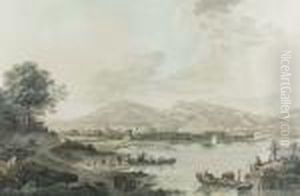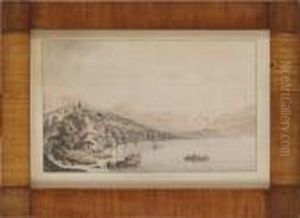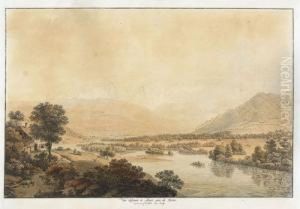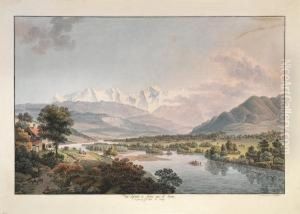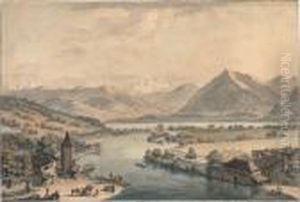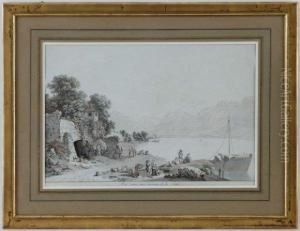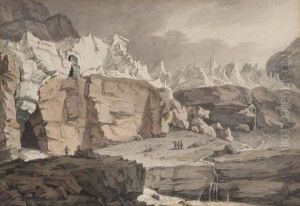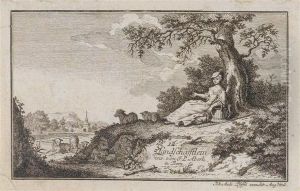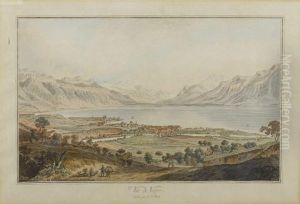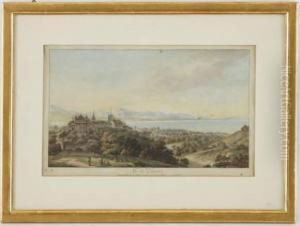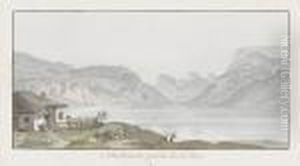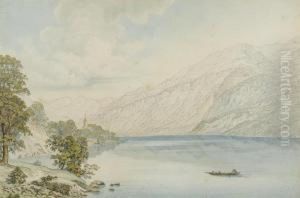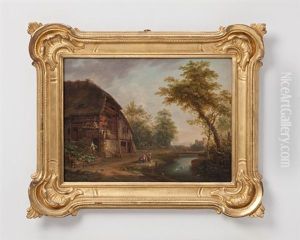Johann Ludwig Aberli Paintings
Johann Ludwig Aberli was a Swiss painter and etcher born on November 13, 1723, in Winterthur, Switzerland. He is particularly known for pioneering a way of painting Swiss landscapes in a realistic yet idyllic and harmonious manner, which was quite innovative at the time. Aberli initially trained under the tutelage of the Swiss painter Emanuel Handmann in Bern.
In 1752, Aberli established himself in Bern and began to produce landscapes, which became his hallmark. His works often featured the Swiss countryside and depicted the Alps in a manner that was both detailed and idealized. Aberli's landscapes had a significant influence on Swiss landscape painting, and his style was characterized by clear, atmospheric perspectives and a warm, gentle palette.
Aberli was also famous for his 'transparente', which were prints colored to be viewed against the light, resembling the effect of stained glass. This technique added to the luminosity and appeal of his images. Moreover, he created a series of etchings of Swiss landscapes, which were colored after printing and contributed to his popularity, as they were collected by tourists as souvenirs.
Throughout his career, Aberli taught several students who would go on to become notable artists in their own right. His influence on Swiss art continued long after his death, as his approach to landscape painting set a precedent for future generations.
Johann Ludwig Aberli passed away on October 17, 1786, in Bern. Today, his works are considered an important part of Swiss cultural heritage and can be found in various museums and collections throughout Switzerland and beyond.





